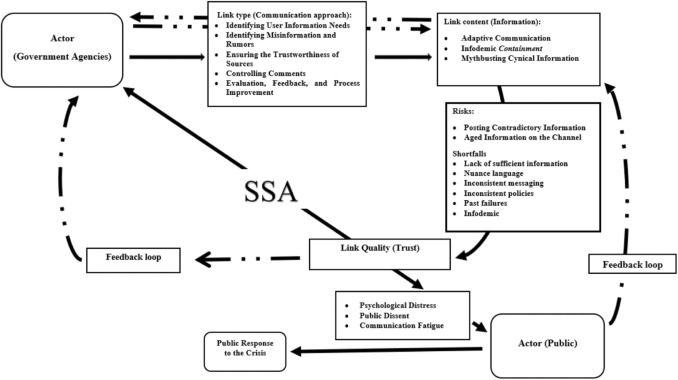
**An In-Depth Examination of Crisis Reporting: The Role of Media in Shaping Our View of Ongoing Crises**
From financial downturns to civil unrest and worldwide health emergencies, it can often seem as though we are perpetually caught in a series of crises. Nevertheless, fresh research provides an intriguing insight into the gap between actual crises and their media representation. A study featured in the *Journal of Communication* (September 18, 2024) scrutinizes the 235-year history of *The Times* and uncovers that, although real crises have only modestly increased, the coverage related to these crises has skyrocketed.
### The Research: Analyzing Centuries of Crisis Coverage
Researchers undertook an extensive computational review of articles from *The Times* stretching back to its establishment in 1785. They pinpointed over 1,000 distinct crises categorized into 20 different types, such as political upheavals, economic issues, pandemics, and environmental disasters.
The principal revelation? Historically, significant spikes in “crisis” coverage emerged approximately four times annually. However, over the past twenty years, the volume and severity of crisis reporting have escalated dramatically.
### Understanding the Rise in Crisis Reporting
What accounts for the rising intensity of media coverage surrounding crises, despite the fact that there has not been a corresponding sharp increase in major crisis incidents? The researchers identified three vital elements fueling this phenomenon:
1. **Enhanced Crisis Public Relations (Crisis PR)** – Specialized lobbying and advocacy organizations have honed their public relations efforts, framing situations to evoke alarm and rally prompt action.
2. **Increased Government Investment** – The expansion of public expenditure across numerous domains—from healthcare to social services—has triggered heightened scrutiny and increased media focus on depicting budgetary choices as crisis situations.
3. **Increased Media Autonomy** – In earlier times, media outlets like *The Times* were often closely linked with political groups or government entities, which swayed their editorial decisions. As journalism becomes less reliant on political affiliations, independent platforms are empowered to pursue more dramatic narratives, often leaning towards crisis-oriented framing to grab public interest.
Stefan Geiß, a leading researcher at the Norwegian University of Science and Technology, elucidates the situation: “Media environments thrive on engagement, and nothing draws in audiences quite like an impending crisis. Yet, this has pushed other quieter yet equally significant narratives—such as economic disparity or environmental issues—to the sidelines of public discourse.”
### The Aggregation of Crises in Modern Media
Another noteworthy discovery is that contemporary media increasingly aggregates crises, enhancing the public perception that we exist in a ceaseless state of disorder. In previous eras, crises were reported in sporadic episodes, more evenly distributed over time. Conversely, today, multiple crises are often depicted simultaneously, fostering a sense of relentless urgency.
To further substantiate their findings, the researchers compared coverage trends in *The Times* with other prominent publications, including *The Guardian*, *The Economist*, *Neue Zürcher Zeitung*, and *The Washington Evening Star*. All demonstrated similar trends of concentrated, ongoing crisis narrative.
### The Wider Implications of Crisis Language
Researchers warn that while covering crises is crucial for keeping the public informed about pressing matters, the media’s dependence on crisis language can lead to harmful outcomes. By perpetually spotlighting acute issues, slower but equally concerning developments—such as systemic inequalities or environmental decline—may be eclipsed or disregarded.
Additionally, audiences risk developing what is termed “crisis fatigue,” where continuous exposure to crisis messaging leads to disconnection or indifference. This fosters an atmosphere where vital, urgent matters—related to climate change or global disparity—lose their capacity to galvanize public action simply due to their lack of the sensationalism that frequent crisis narratives demand.
### Essential Terminology:
– **Crisis Language**: Terminology that presents events as urgent, significant threats needing immediate focus.
– **News Surge**: A swift rise in media attention on a particular event or topic.
– **Crisis PR**: Public relations tactics aimed at framing situations as crises to garner attention and influence public sentiment or policy.
– **Mediatization**: The ongoing process by which media increasingly shapes and governs social, cultural, and political undertakings.
### Challenge Your Knowledge
– **Q**: How many types of crises did the researchers outline in their analysis?
**A**: 20 types of crises.
– **Q**: How frequently did major waves of crisis-related news appear in earlier historical contexts?
**A**: Roughly four times annually.
– **Q**: How many years of newspaper records did the researchers explore?
**A**: 235 years (since 1785).
– **Q**: What are the three primary factors contributing to the boost in crisis reporting?
**A**: Enhanced crisis PR, increased public expenditure, and greater media autonomy.